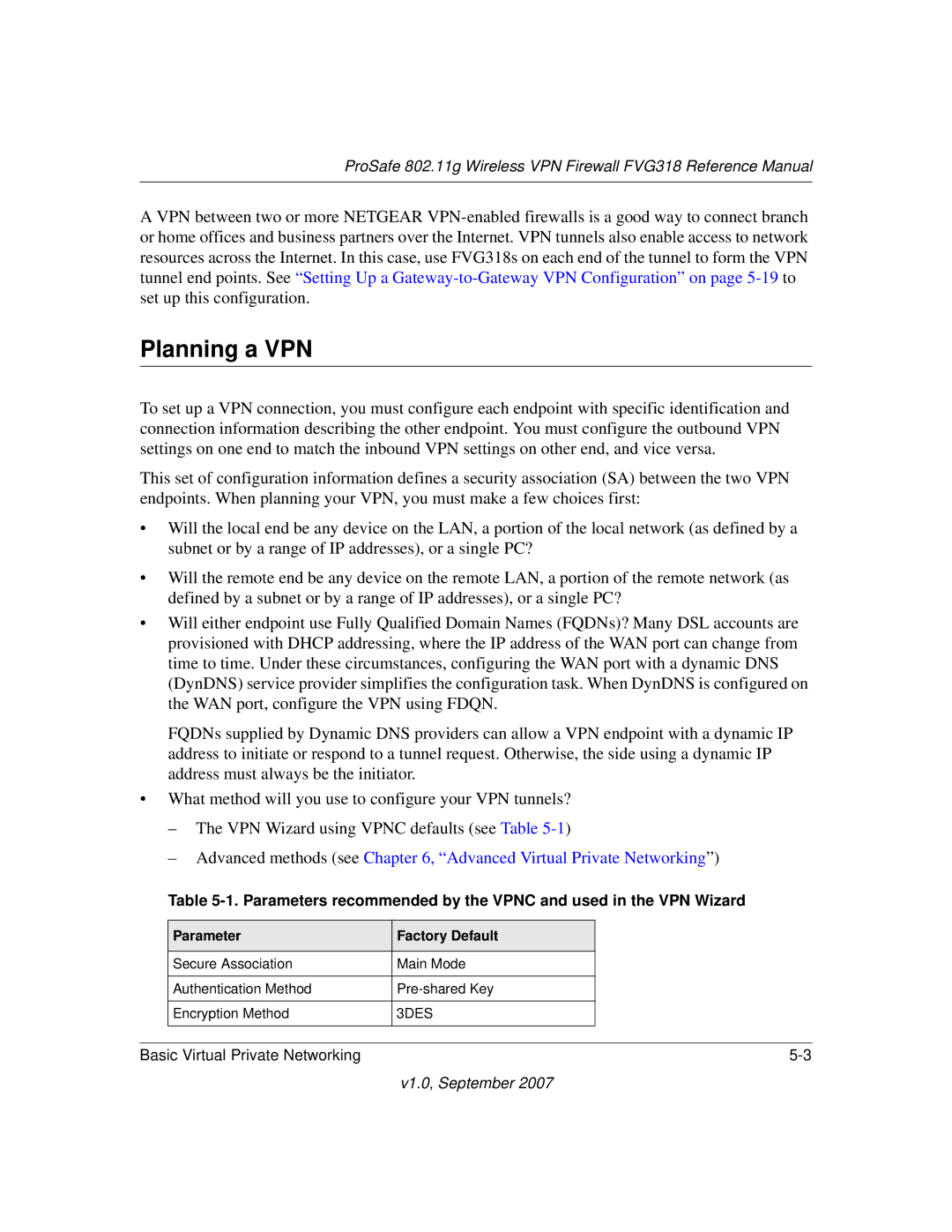
ProSafe 802.11g Wireless VPN Firewall FVG318 Reference Manual
A VPN between two or more NETGEAR
Planning a VPN
To set up a VPN connection, you must configure each endpoint with specific identification and connection information describing the other endpoint. You must configure the outbound VPN settings on one end to match the inbound VPN settings on other end, and vice versa.
This set of configuration information defines a security association (SA) between the two VPN endpoints. When planning your VPN, you must make a few choices first:
•Will the local end be any device on the LAN, a portion of the local network (as defined by a subnet or by a range of IP addresses), or a single PC?
•Will the remote end be any device on the remote LAN, a portion of the remote network (as defined by a subnet or by a range of IP addresses), or a single PC?
•Will either endpoint use Fully Qualified Domain Names (FQDNs)? Many DSL accounts are provisioned with DHCP addressing, where the IP address of the WAN port can change from time to time. Under these circumstances, configuring the WAN port with a dynamic DNS (DynDNS) service provider simplifies the configuration task. When DynDNS is configured on the WAN port, configure the VPN using FDQN.
FQDNs supplied by Dynamic DNS providers can allow a VPN endpoint with a dynamic IP address to initiate or respond to a tunnel request. Otherwise, the side using a dynamic IP address must always be the initiator.
•What method will you use to configure your VPN tunnels?
–The VPN Wizard using VPNC defaults (see Table
–Advanced methods (see Chapter 6, “Advanced Virtual Private Networking”)
Table
| Parameter | Factory Default |
|
|
|
|
|
| Secure Association | Main Mode |
|
|
|
|
|
| Authentication Method |
| |
|
|
|
|
| Encryption Method | 3DES |
|
|
|
|
|
|
|
|
|
Basic Virtual Private Networking | |||
